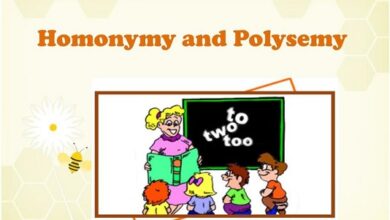Lexical field examples and characteristics
Lexical field
A lexical field is made up of a set of lexical units (words) that share certain notes of meaning. All members of the set belong to the same grammatical class (nouns, adjectives, verbs ). Furthermore, they all encompass the entirety of the relevant meaning domain, but also show definite contrasts. Lexical field characteristics and examples
Although on other internet websites it is said that a lexical field is words with different grammatical classes, it is wrong information. According to Scandell Vidal, Professor of Linguistics, they are part of the same grammar class.
An example of a lexical field would be walking, running, jumping, jumping, jogging, and climbing, verbs (same grammatical category), which mean movement made with the legs.
Thus, for example, the word such, tamal, corn cake, belong to the same lexical field. All of them are nouns. They also all refer to the food of Mesoamerican origin made with corn dough, wrapped in leaves, and with different fillings. But these are markedly different versions.
The concept of the lexical field was first introduced on March 12, 1931, by the German linguist Jost Trier (1894-1970). According to his theory, the vocabulary of a language resembles a mosaic.
Each of the individual words represents a part of it. These are grouped into larger units called lexical fields. Lexical field characteristics and examples
In turn, the union of all these mosaics makes up the total vocabulary. In this way, the meaning of a lexical unit depends on the meaning of the other integral units of another larger system called language. This system is constantly growing due to the appearance of new meanings.
Characteristics of a lexical field
Same Lexical Category
A lexical category refers to any of the classes into which the lexical elements of a language are divided by their morphological and syntactic behavior.
In traditional grammar, they are known as word classes. Among them are nouns, verbs, and adjectives.
Thus, all the members of a lexical field must belong to the same lexical category. If it is a verb, all the components of that field will also be verbs. Such would be the case with walking, running, jumping, jumping, jogging, and climbing. Lexical field characteristics and examples
Relevant shared meaning
Words are made up of minimal units of meaning, called semes, which do not manifest independently.
Thus, for example, the word bed contains the following semes: furniture for people to lie down on, it has a frame, a mattress or table is placed on the frame, etc.
Now, two or more words are said to belong to the same lexical field when they share a relevant meaning or sema.
In the case of the previous example, other words included within the lexical field of bed would be sofa-bed, crib, and divan. The same common to all of them is furniture for people to lie down on.
Similarly, each of the elements of the group consisting of walking, running, jumping, jumping, jogging, and climbing has several minimal semantic features. But they also have a common sema: action that is carried out with the legs.
Contrast of precisely defined meanings
Although all the particular elements of a lexical field exhibit shared semes, they all have contrasting relationships that differentiate them. To illustrate the point, take the distinction between humitas and sacacas (or hayacas).
On the one hand, as mentioned in the introduction, both nouns refer to a kind of corn cake wrapped in leaves. However, there are notable differences.
The humitas are made with fresh corn, they do not have a filling and are wrapped with corn husks. For its part, a Halca is precooked corn flour, it has filled and it is wrapped with banana leaves.
Likewise, there are contrasts in terms of bedding and crib, for example. These differ in size (a crib is considerably smaller than a bed). Also, the purpose is different (a crib is intended to be used by babies). Lexical field characteristics and examples
Examples
In a given lexical field, relationships of similarity and contrast are established with respect to semantic features. In this way, each field denotes a segment of the reality symbolized by a set of related words.
In this way, the words that are part of a lexical field enter into relationships of meaning or meaning with each other. Each word delimits the meaning of the next word in the field and is delimited by it; that is, it marks an area or range within the semantic domain.
Take as an example the words walk, run, jump, jump, jog, and climb. As mentioned, these belong to the same lexical field, since they share the same distinctive feature of meaning: action or movement performed with the legs. However, not all share all the traits:
- Go from point A to point B: walking, running, jumping, jogging, and climbing
- Walking horizontally: walking, running, and jogging
- Walking at a considerable speed: running and jogging
- Ascend using legs and hands: climb
- Ascend: jump and jump
This same exercise can be carried out with the bed, sofa-bed, crib, and divan group. As already established, the shared sema is: furniture used for people to lie down. Other distinctive features would be:
- Used for sitting: sofa bed and divan
- Used for young people: crib
- Elongated seat: daybed
It can be said then that these delimitations are configuring the map of meaning of each word. In this map there are shared features and different features.
This information is constantly used by each user of the language when making their vocabulary choices. Lexical field characteristics and examples
